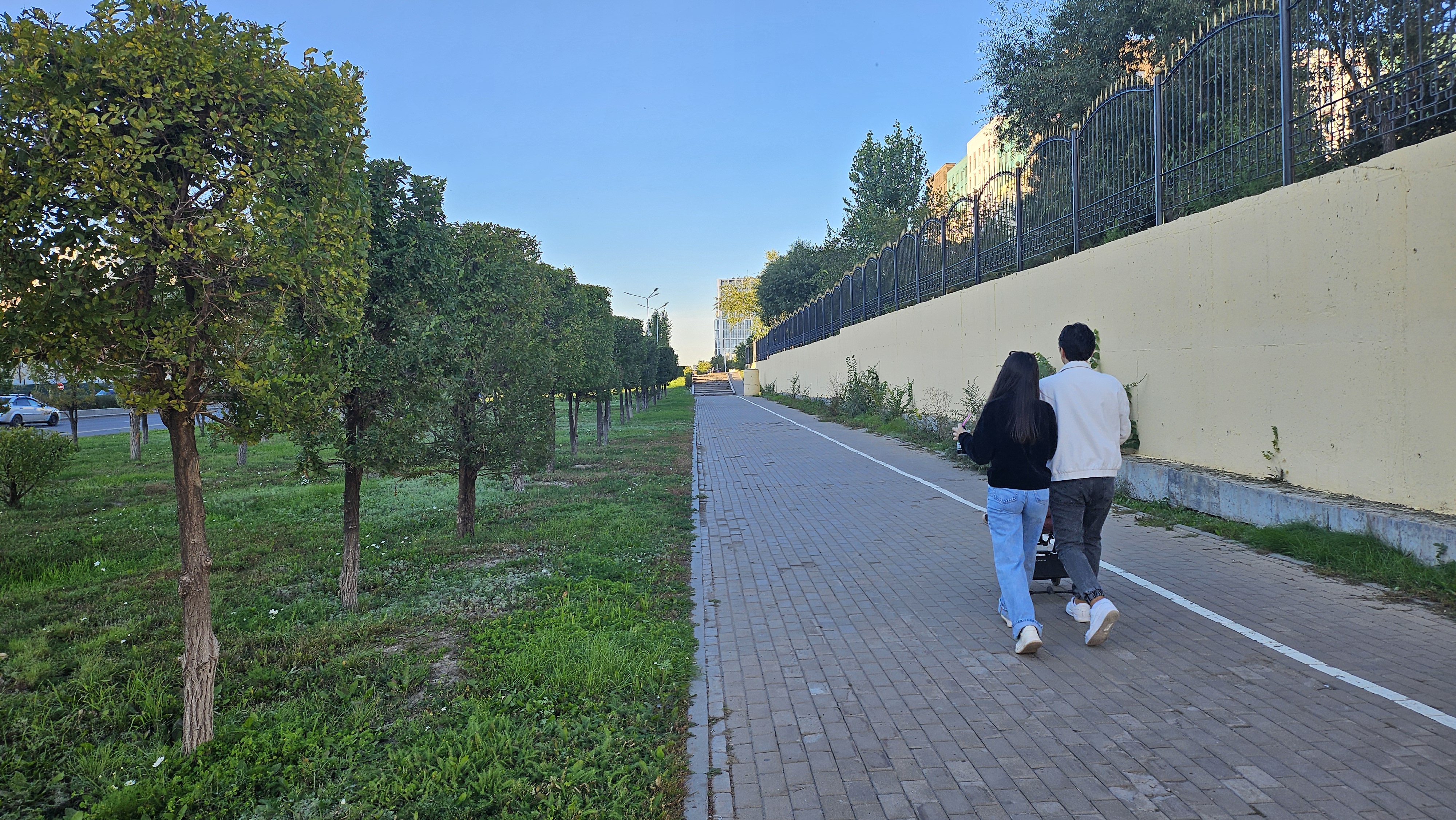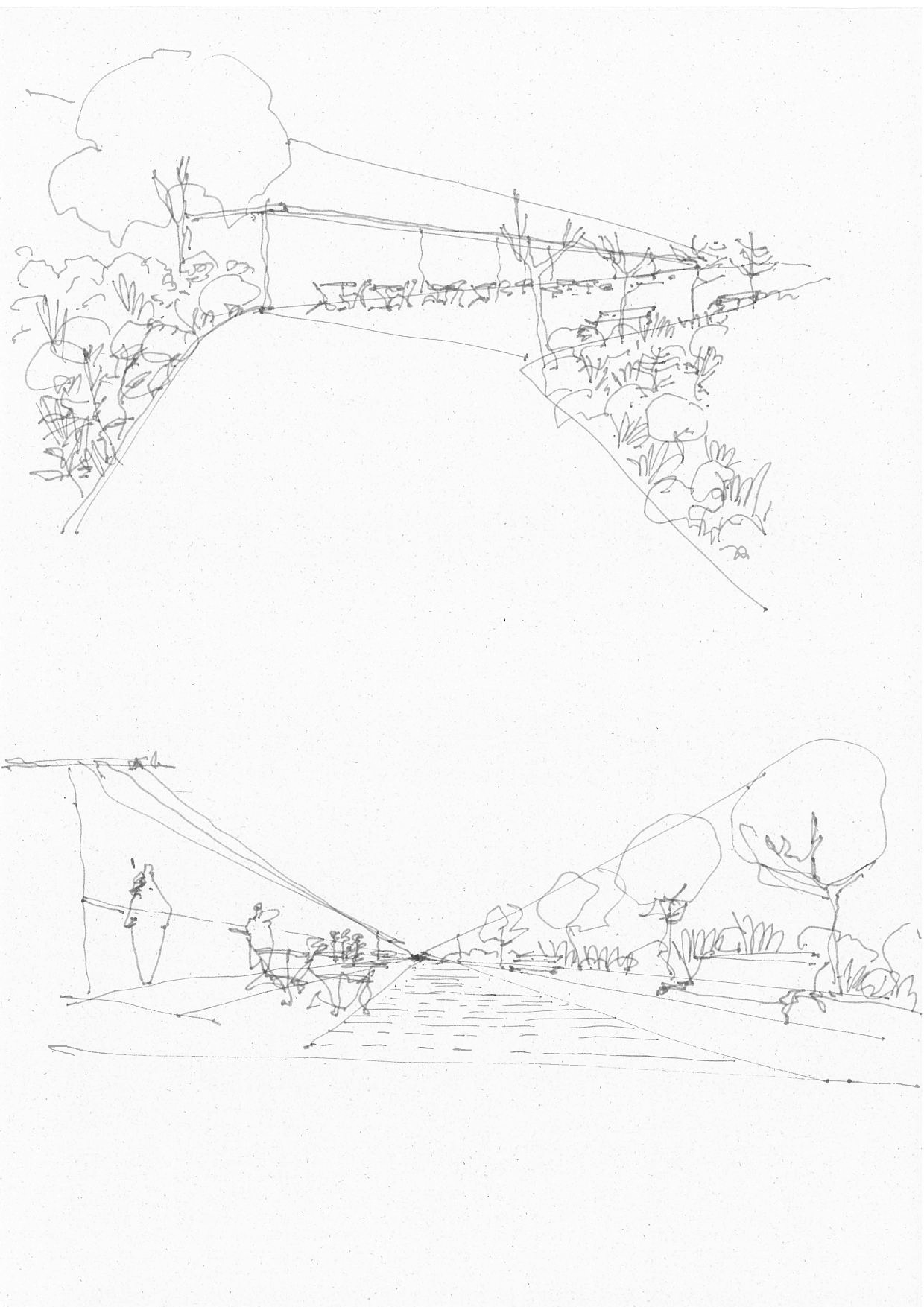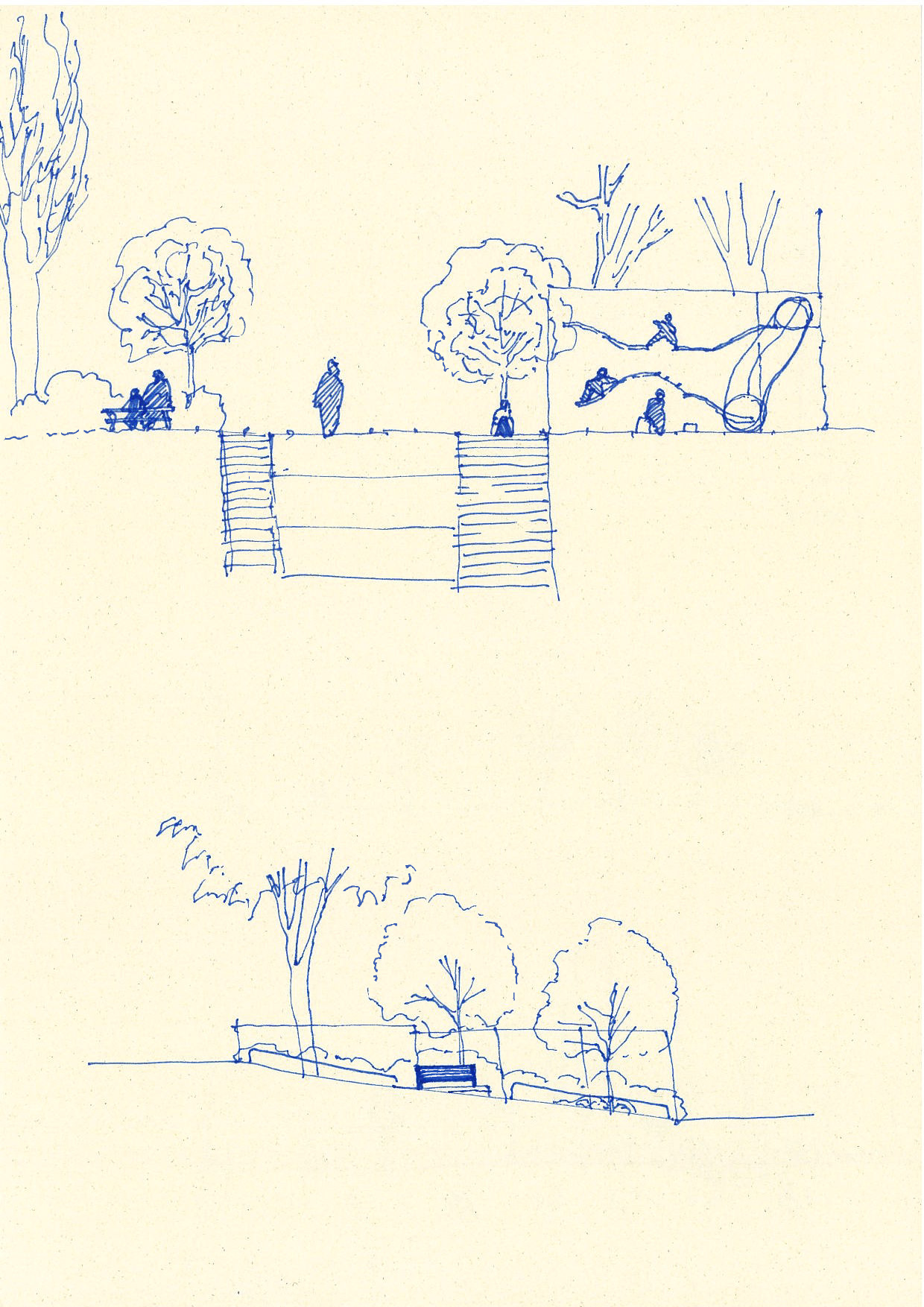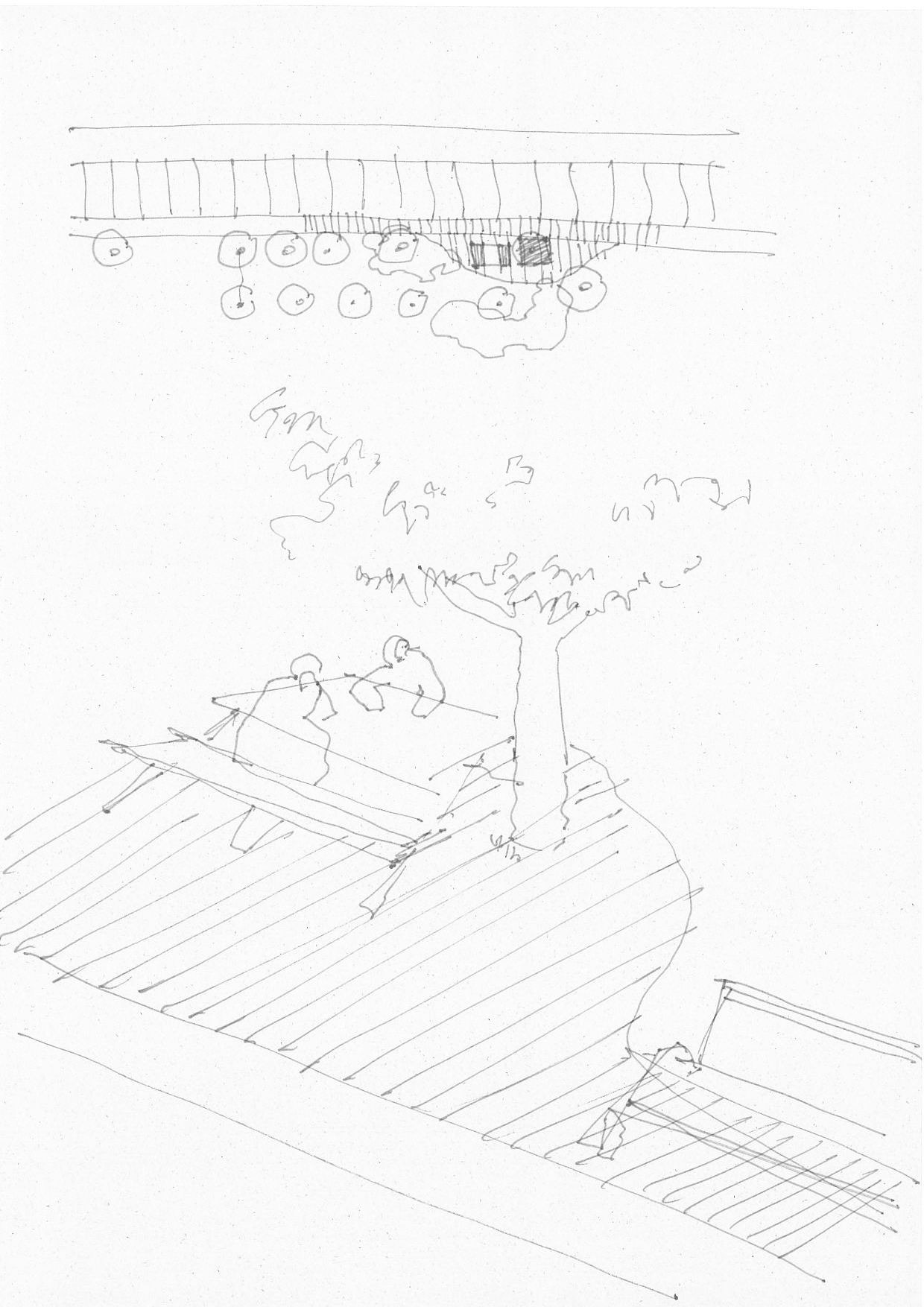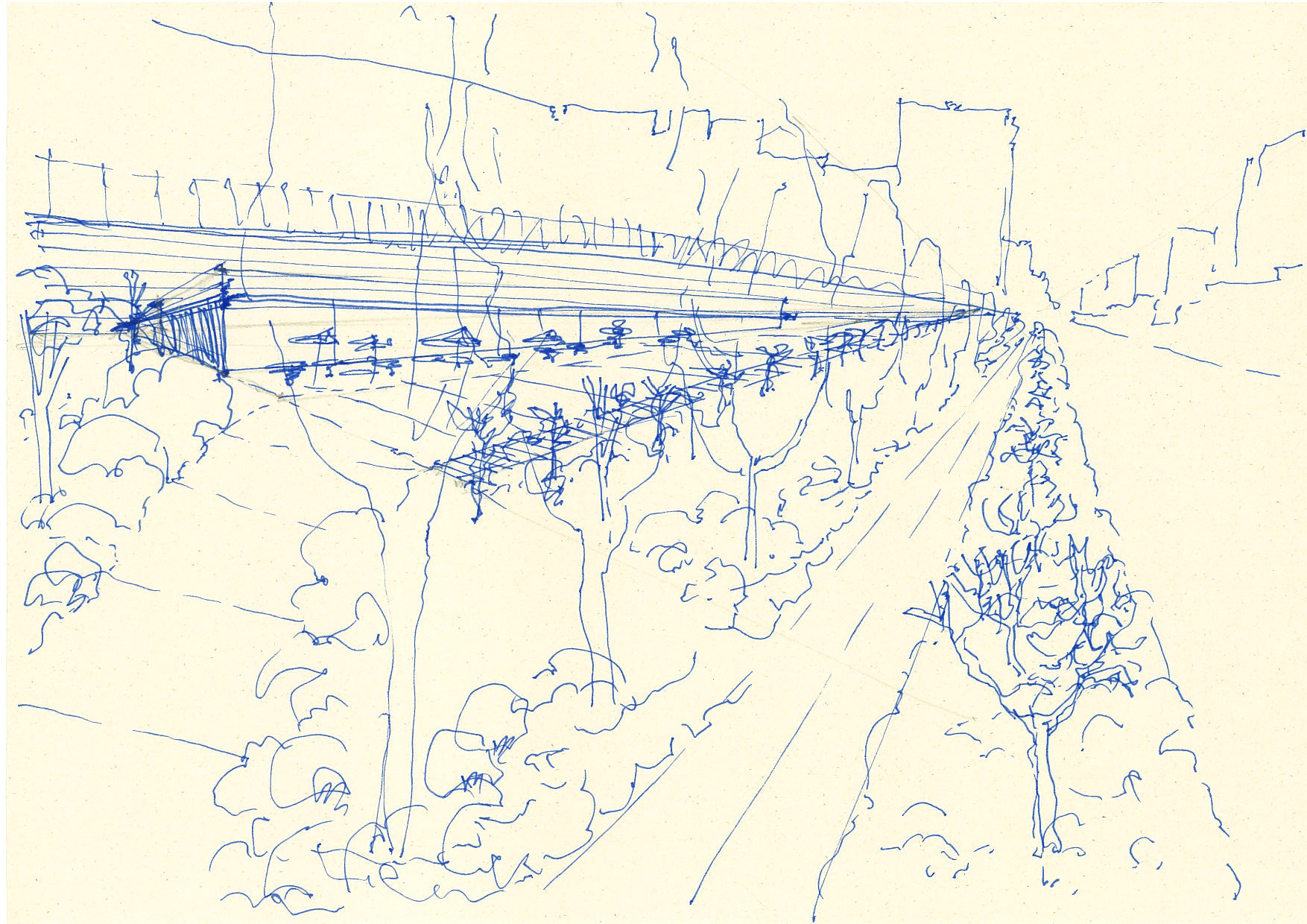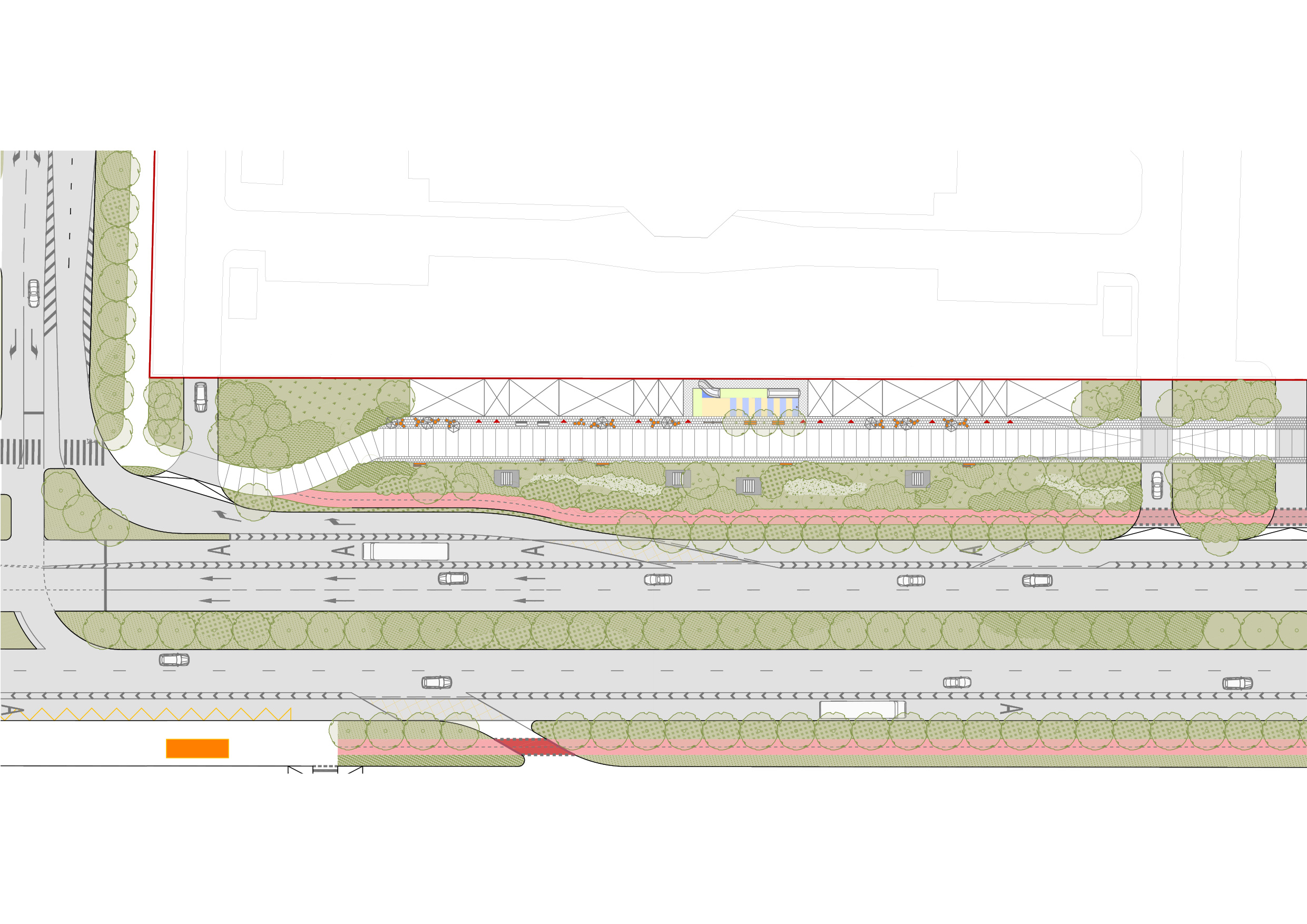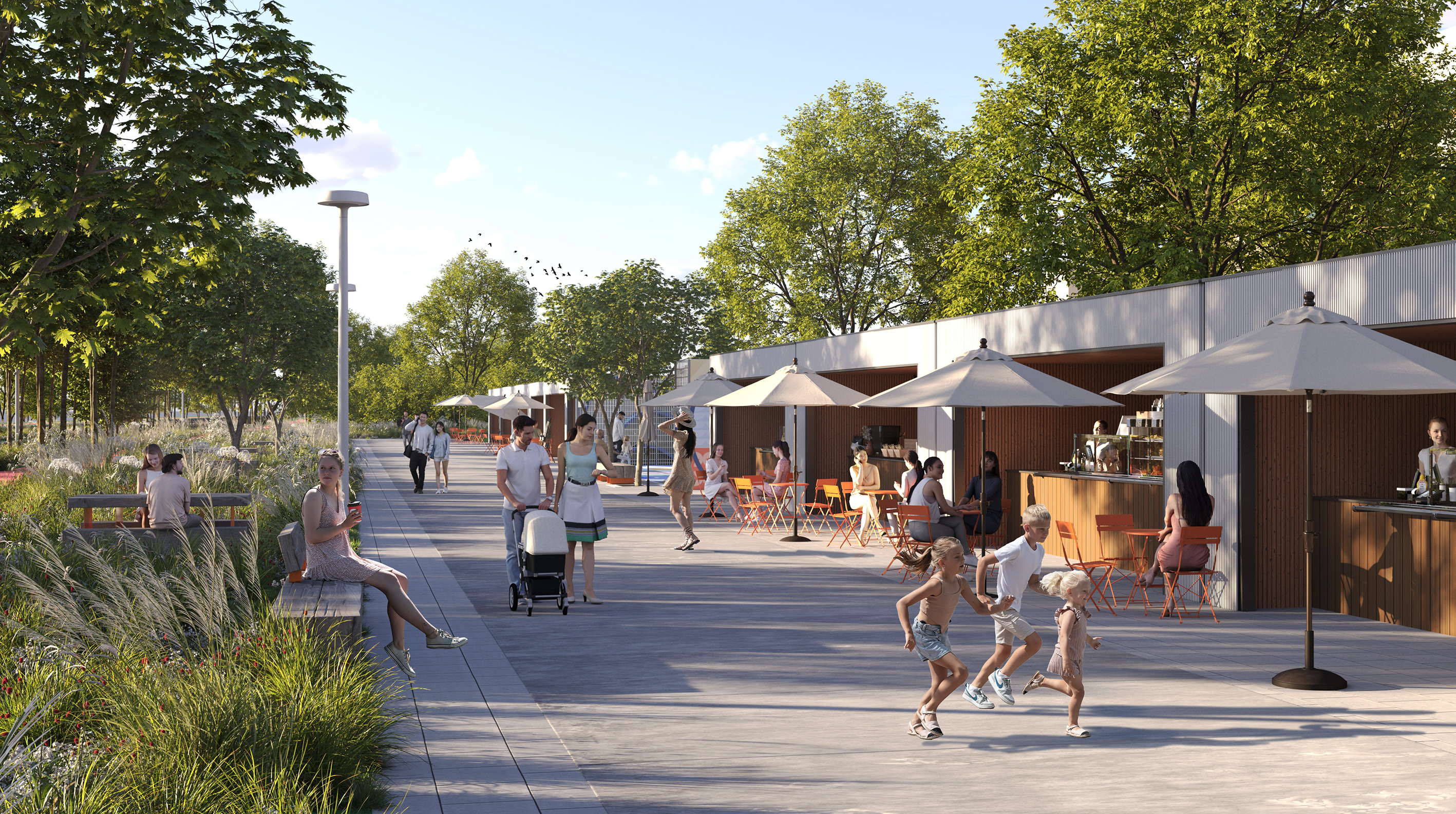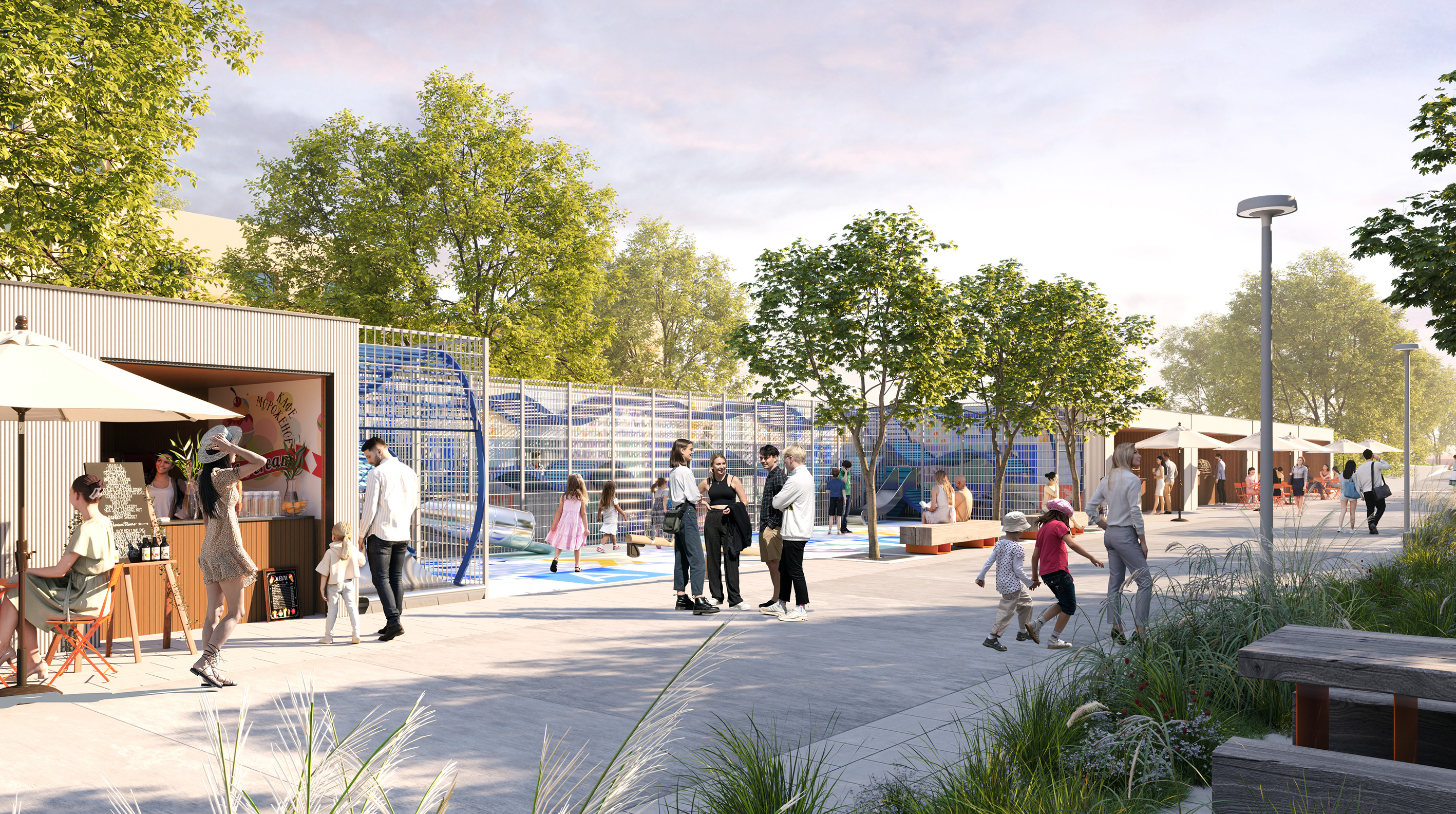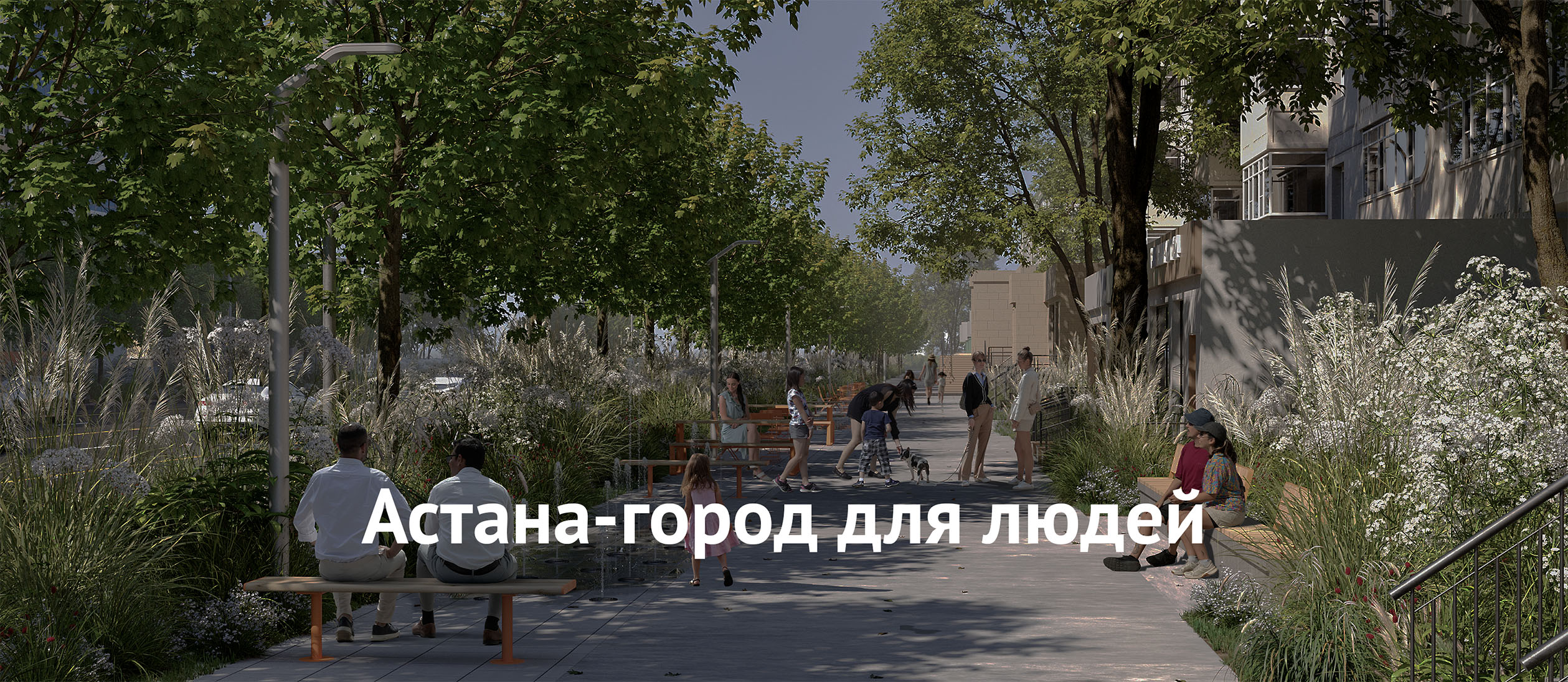
This public space project in Astana introduces strategies for creating a comfortable and resilient urban environment that encourages social interaction and enhances mobility.
Date
Location
Working project
Location
Working project
June-August 2024
Astana, Republic of Kazakhstan
Moscow, Russian Federation
Astana, Republic of Kazakhstan
Moscow, Russian Federation
AN OLD CITY
The site is located in the Old Town, developed in the mid-20th century, characterized by mid-rise buildings, narrower streets compared to the modern parts of the city, and active ground floors with commercial uses.
As car ownership increased, streets were widened at the expense of sidewalks, deteriorating pedestrian conditions and limiting the social function of public space.
To bring street life back, sidewalks were widened, and trees and shrubs were planted to protect pedestrians from traffic and weather. Foundations were laid for a blue-green infrastructure that manages stormwater and supports biodiversity. In addition, new public seating areas were introduced, and conditions for ground-floor businesses were improved.


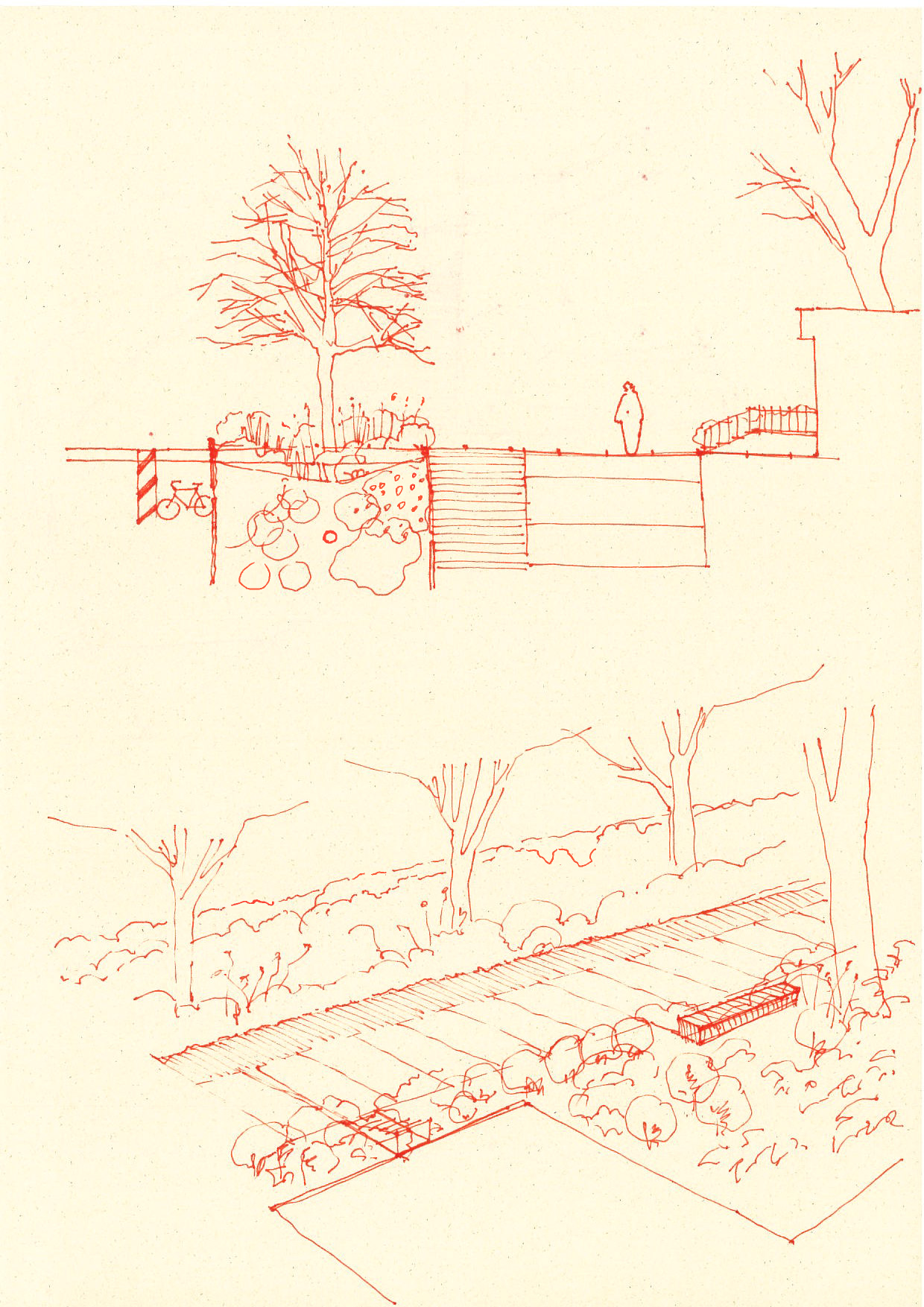

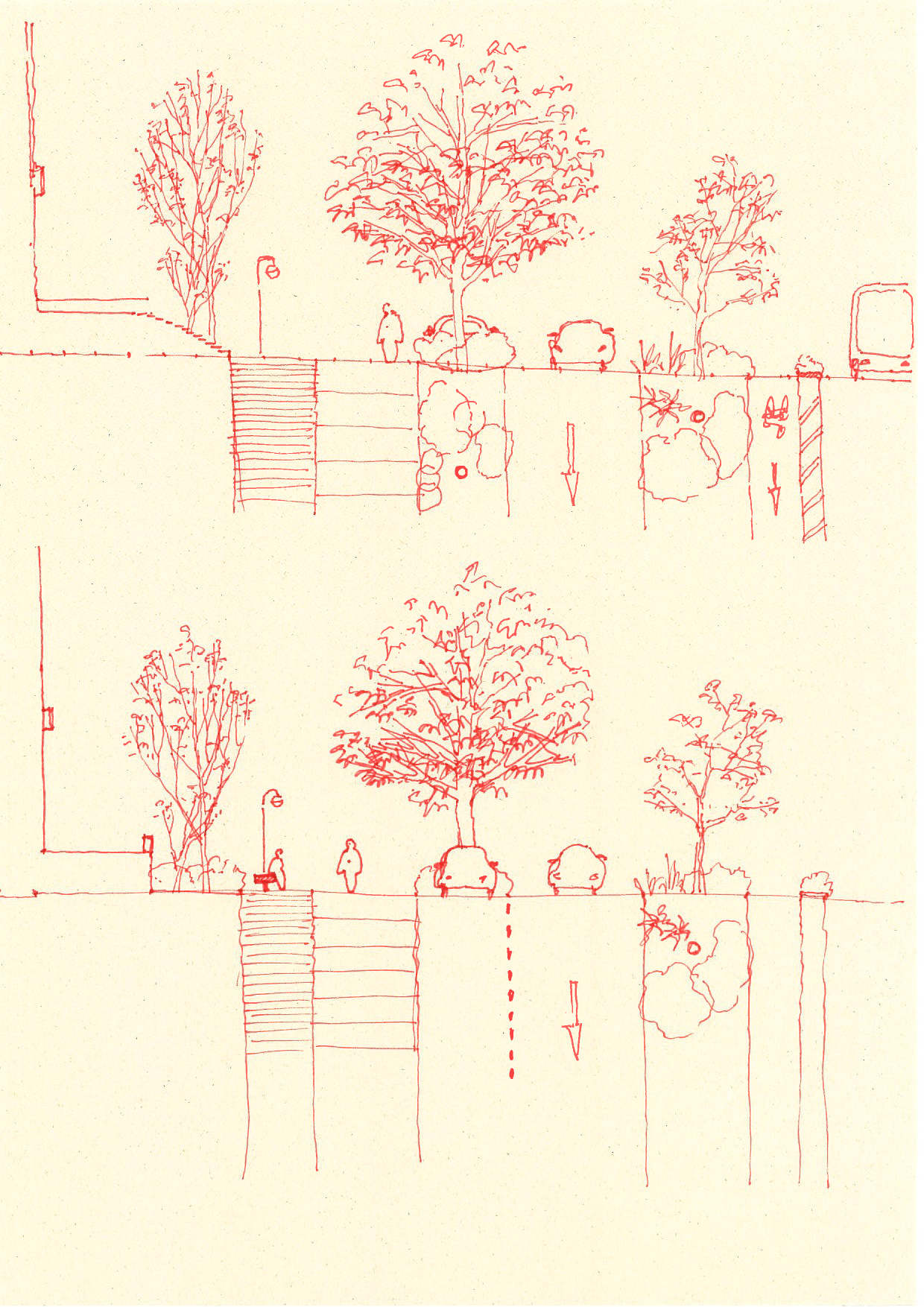
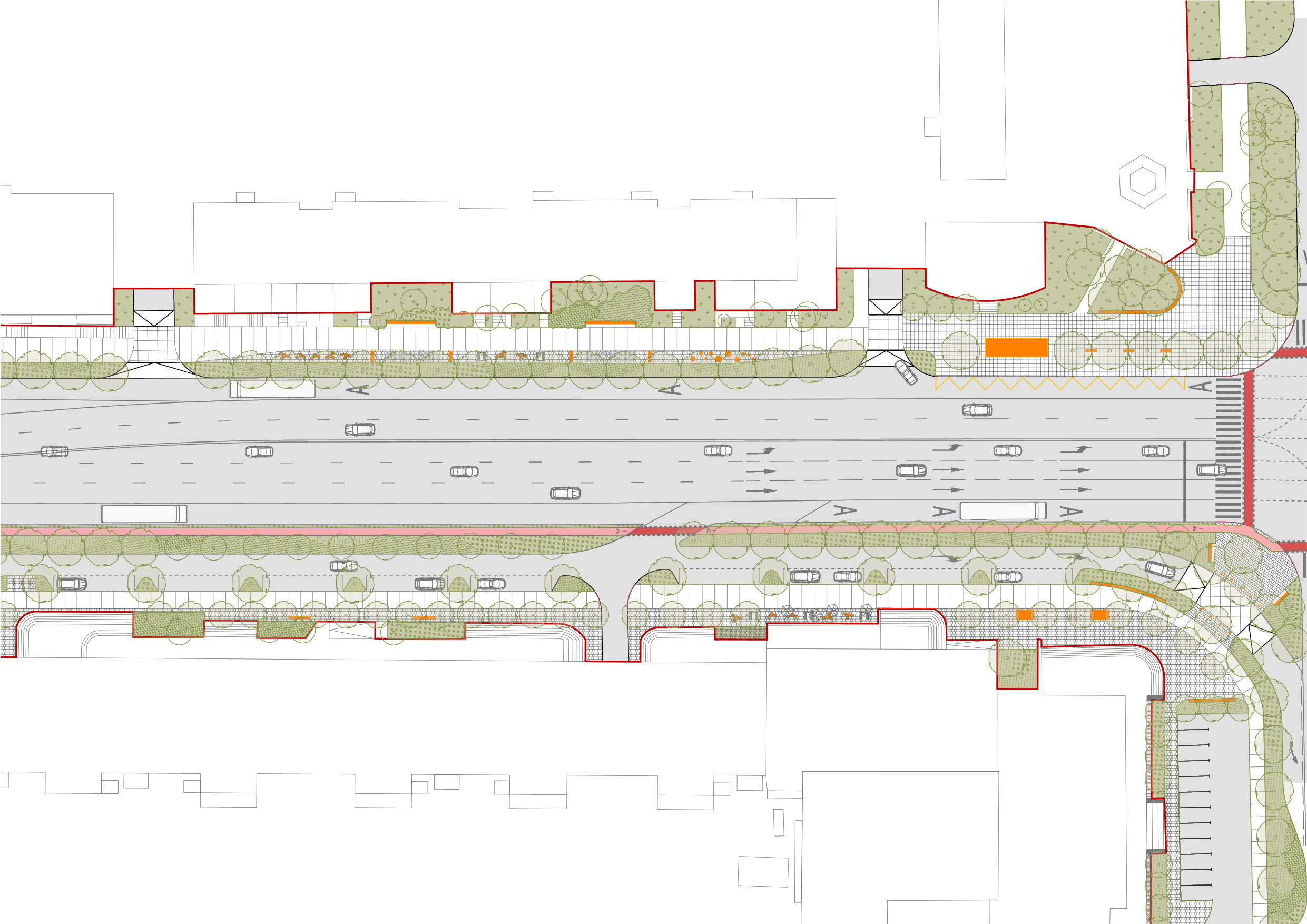
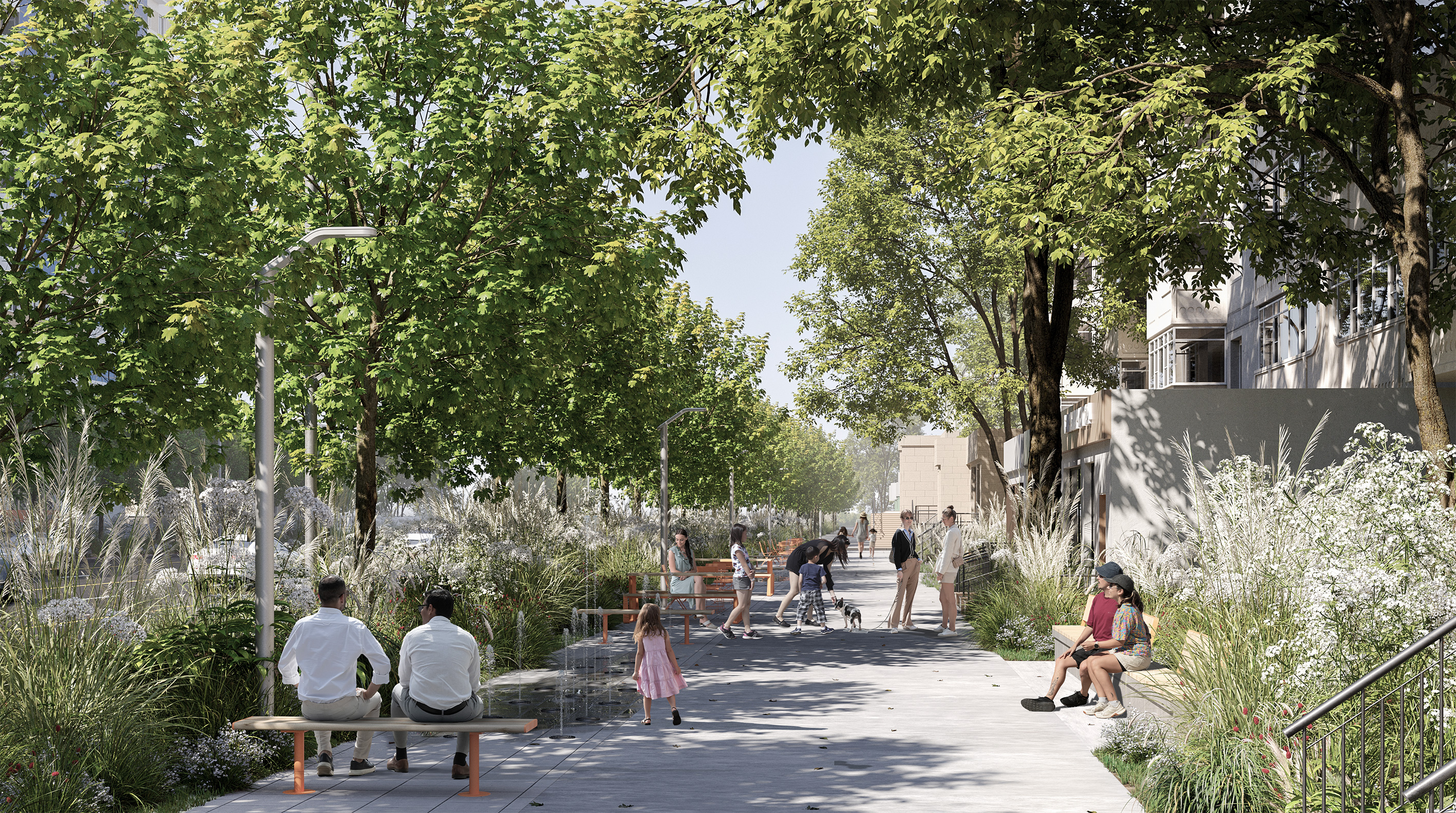

CAPITAL PARK ENTRY SQUARE
The entry square of Astana’s Capital Park, located near the Tulpar Bridge, is currently dominated by a vast surface parking lot. Despite the limited number of commercial spots, the area shows signs of social activity, especially on weekends and during good weather. Residents often gather here before entering the park — grabbing coffee, observing city life, or, in the case of motorcyclists, meeting up for casual hangouts.
Yet, this space holds the potential to become a truly welcoming and vibrant urban destination. A new design that invites people to spend more time outdoors will increase its appeal and draw even more residents to the area.
The main objective of the redevelopment is to activate urban life by ensuring comfortable access for pedestrians, public transit users, drivers, and micromobility users. By addressing both transportation needs and the human scale, the proposed design will transform the park’s entrance plaza into one of the city’s most beloved gathering places.
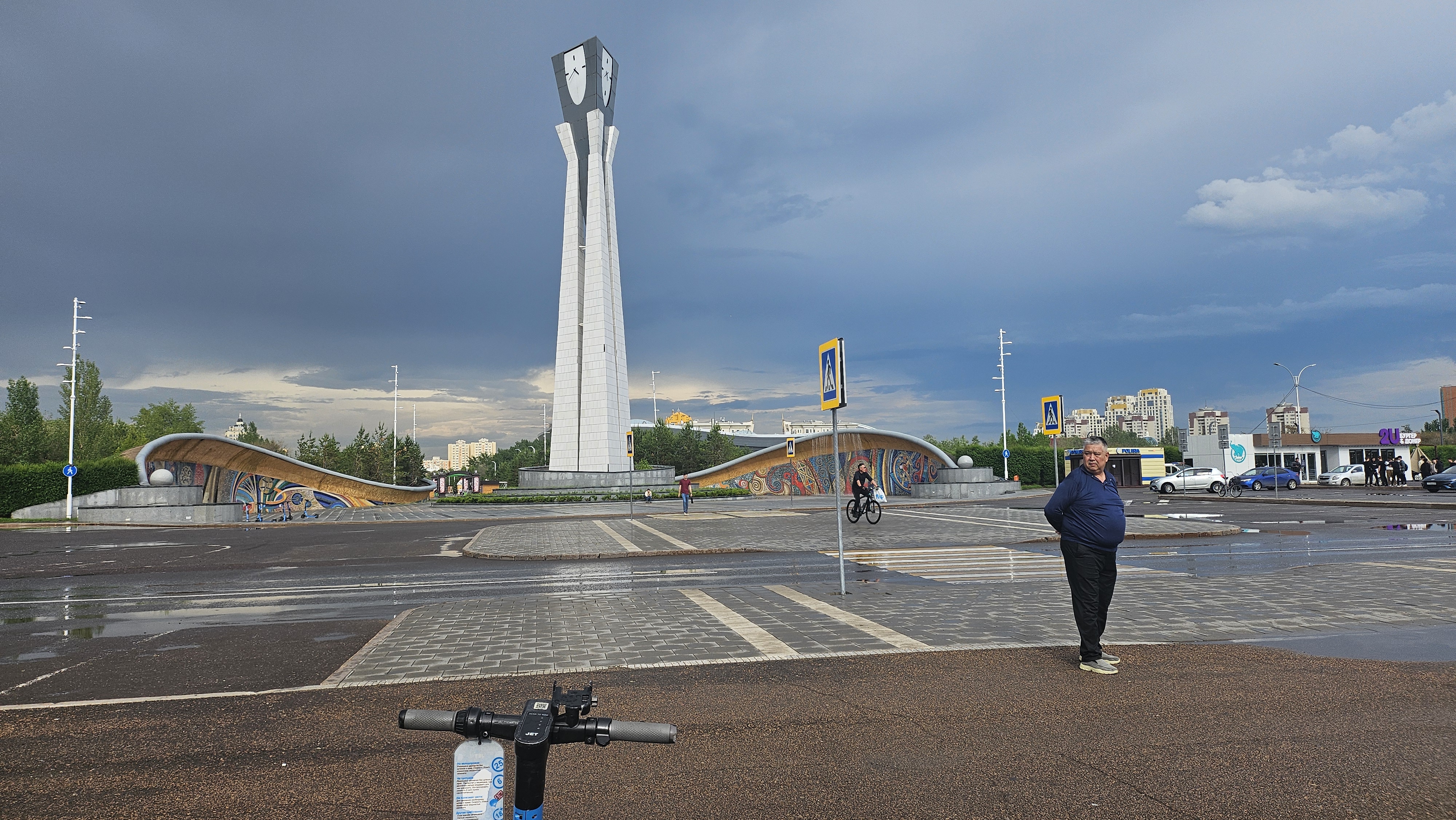
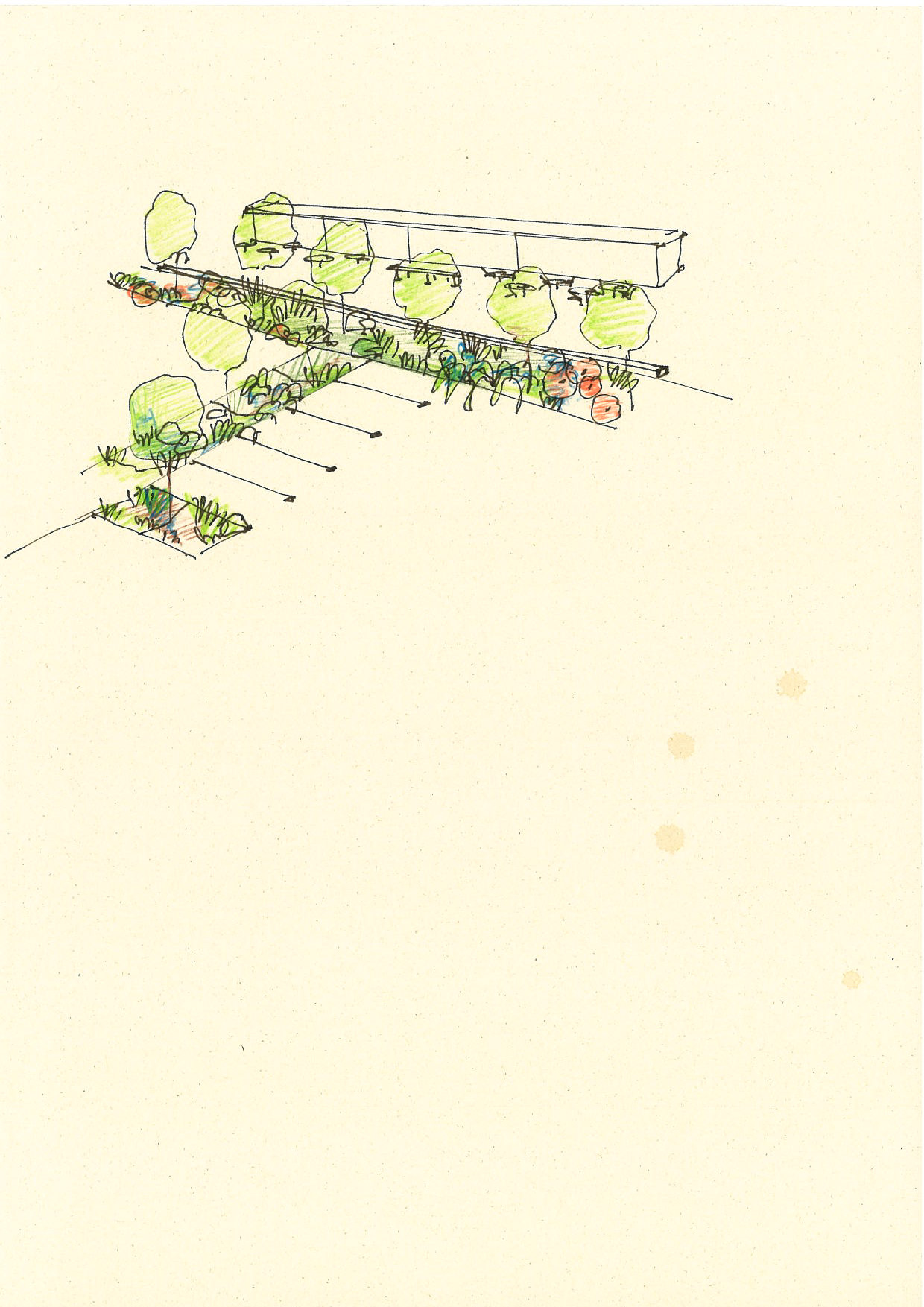

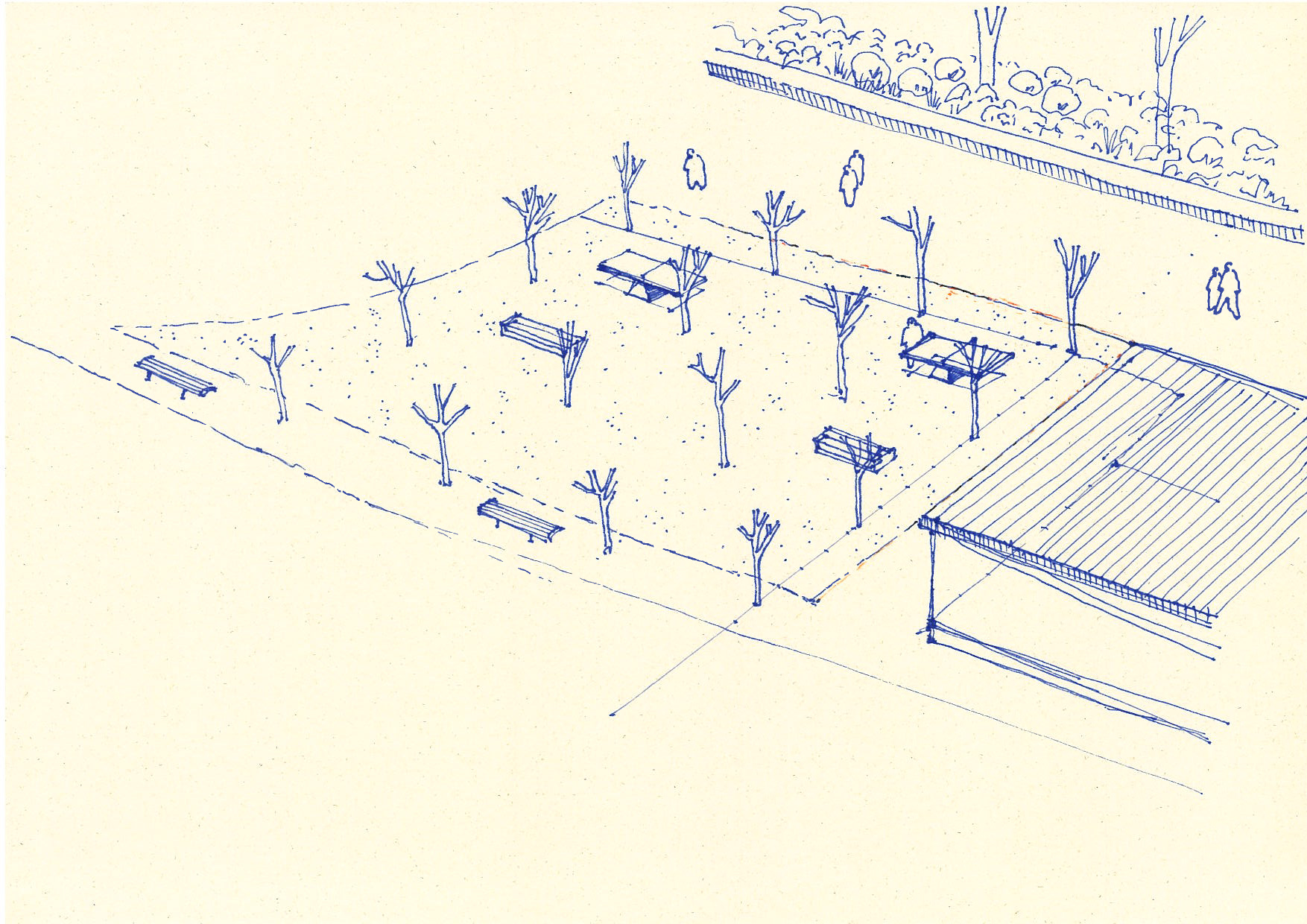


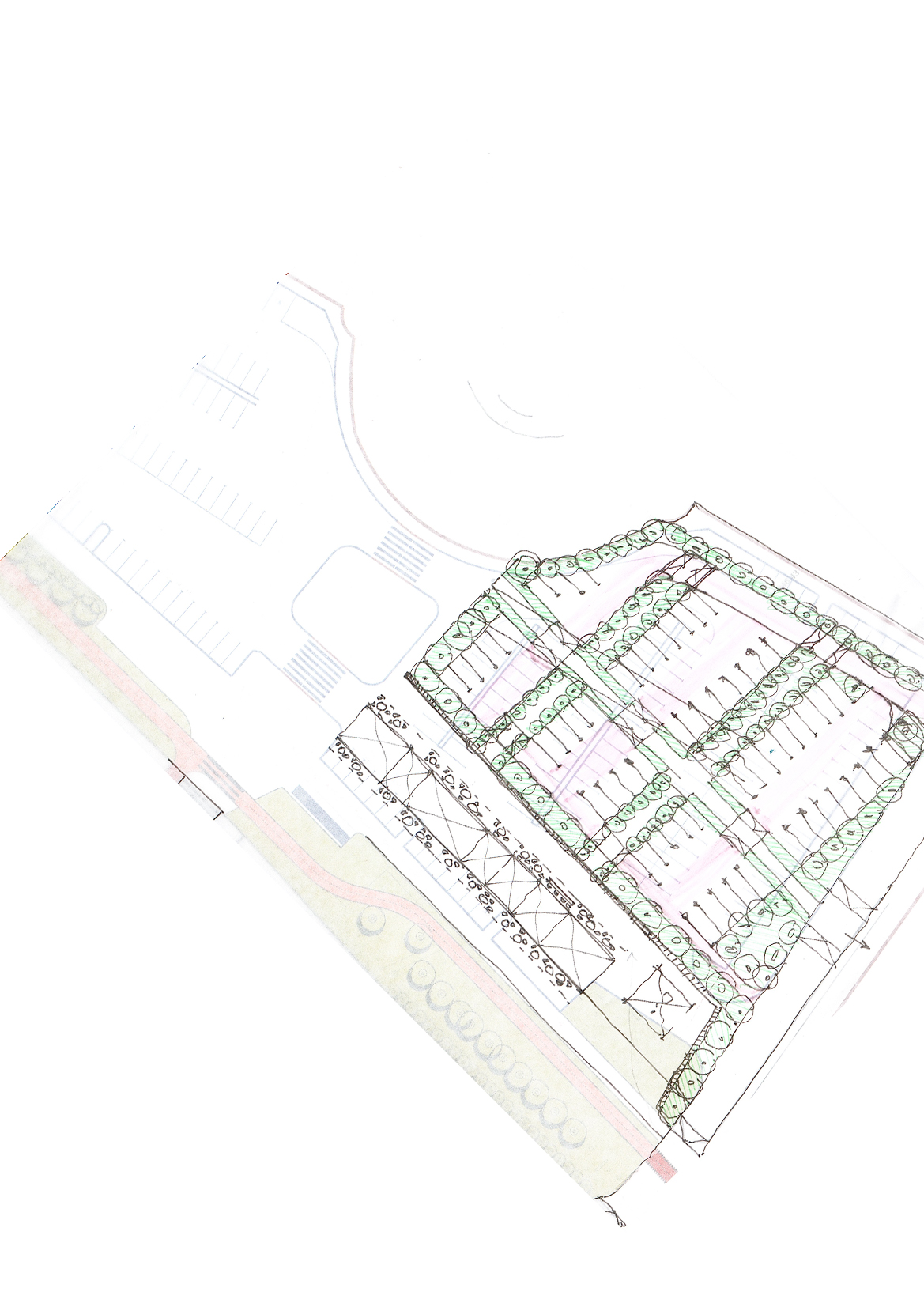


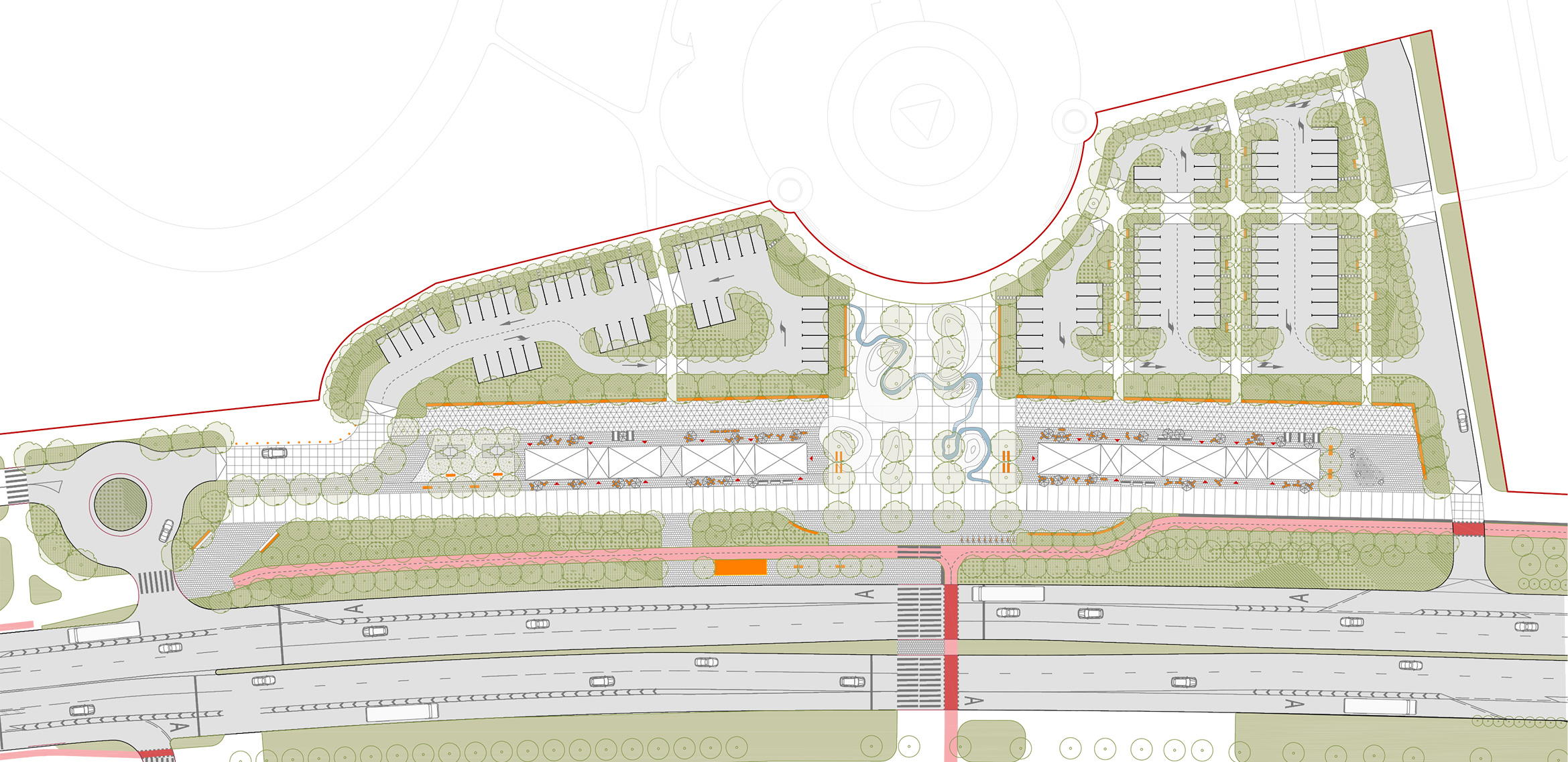
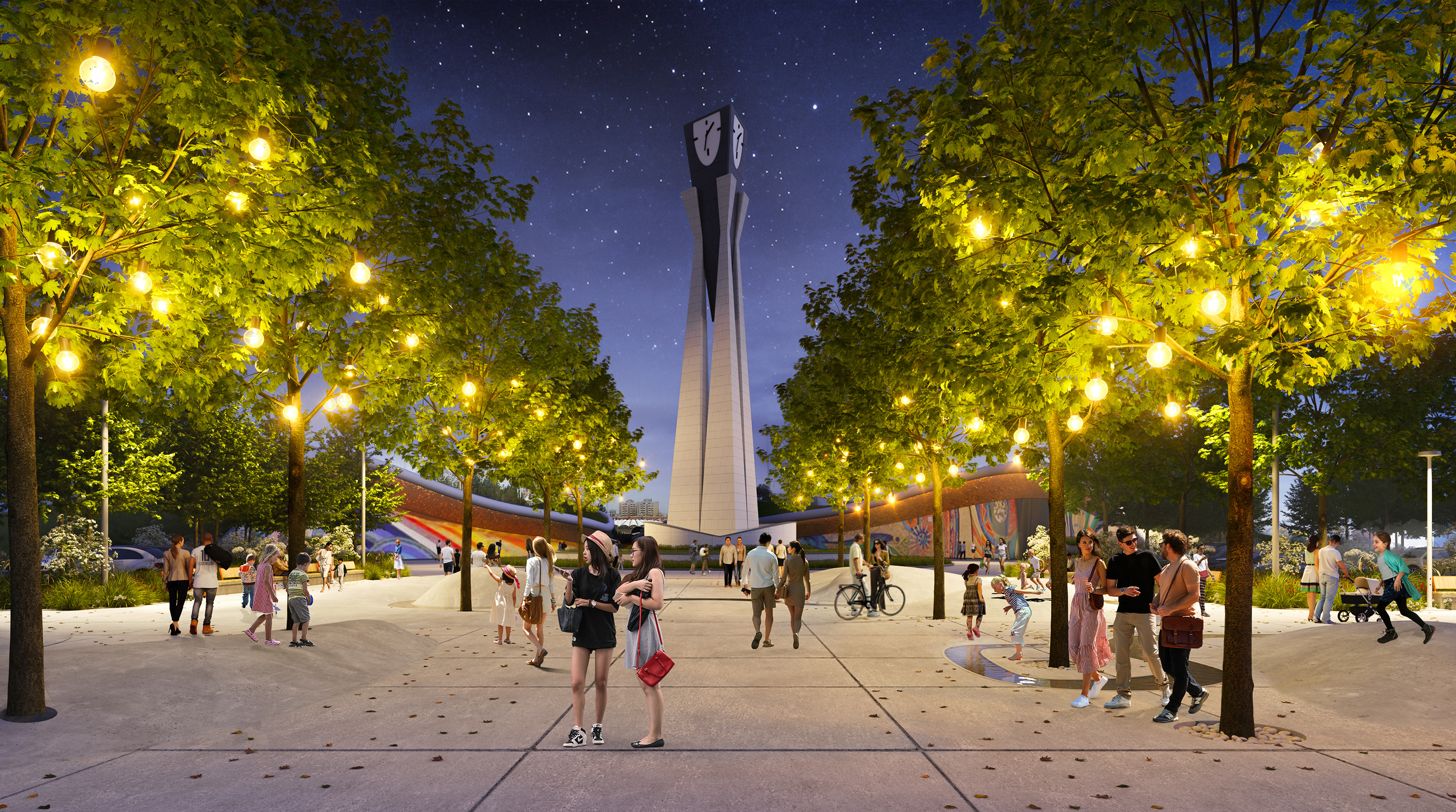
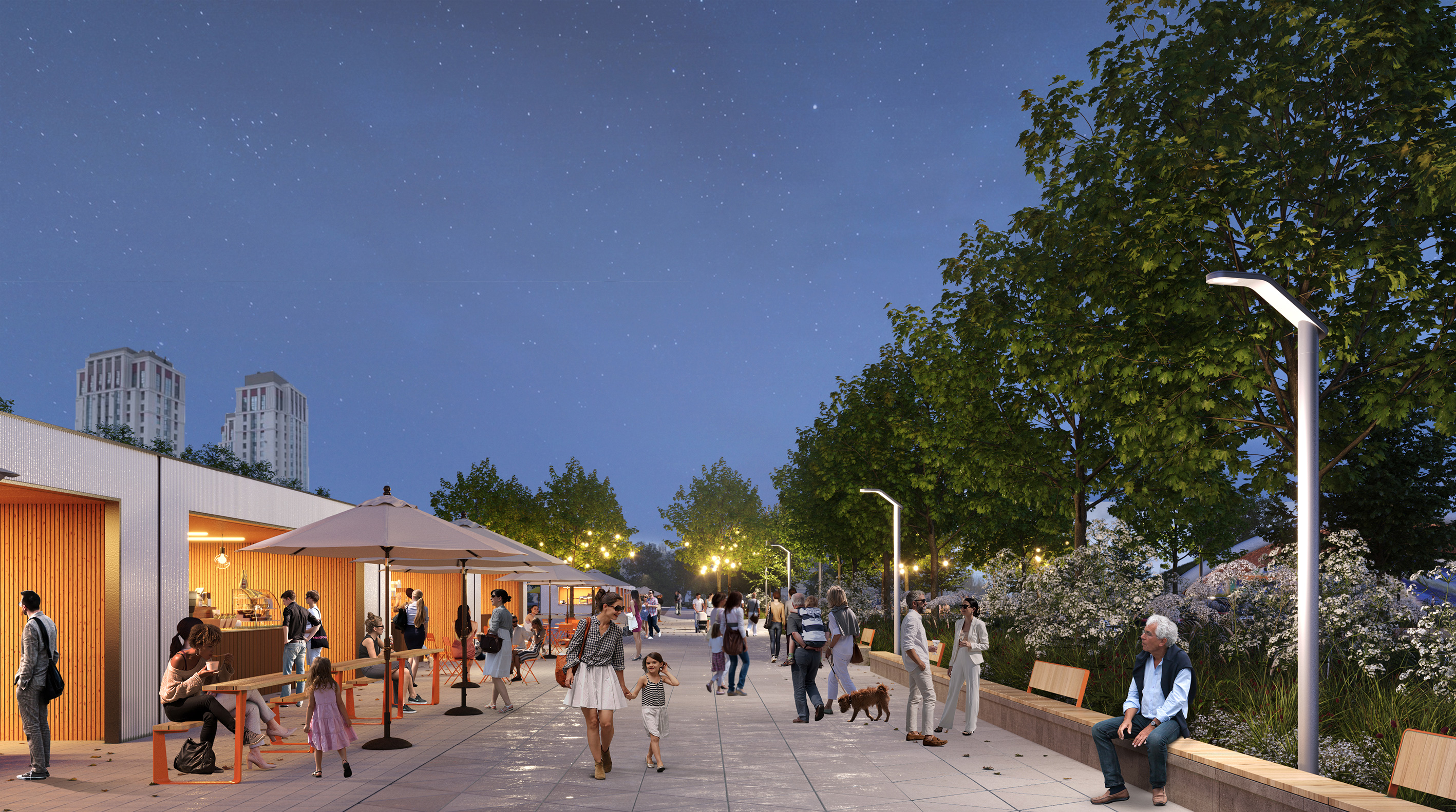
ALONG THE WALL
A section of Turan Avenue near the National Center for Children's Rehabilitation runs alongside a tall retaining wall and a green strip with trees, creating a dull and monotonous atmosphere. For pedestrians, the walk feels long and uninviting, and the area is perceived as a mere transit zone due to the lack of engaging elements. Noise and vehicle emissions further worsen the experience.
This stretch connects residential neighborhoods with commercial and business areas, with 500 to 1,000 people passing through every hour. However, the current environment lacks the comfortable infrastructure needed to meet the needs of such a large number of users.
A potential solution is to introduce points of interest along the route to make the journey more engaging for pedestrians. Separating the traffic flow from the pedestrian zone with dense greenery would create a more pleasant, street-friendly environment that invites people to spend time outdoors.
